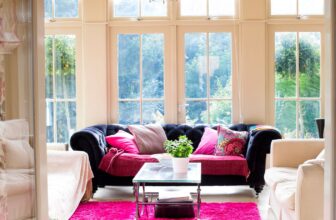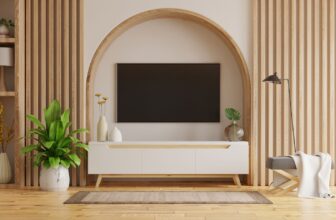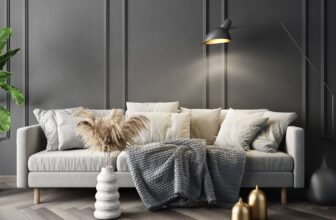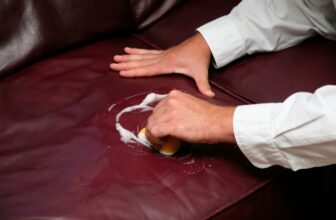Why Are Poufs So Expensive? (And How To Make Your Own)
Versatile, small, and comfortable, a poof can be a perfect fit for almost any room in your house.
They add texture and color to any space you place them in and allow you to personalize your home decor and make it more unique.
Plus, they are highly practical and can play an important functional role.
While they’re one of the simplest interior design elements, they can be used in many different ways, including as additional seating, a side table, a footrest, a pet bed, or simply as a style piece.
All these reasons make poufs one of the most in-demand pieces of furniture on the market, especially among those looking to decorate their homes in a more modern manner.
However, many homeowners are left somewhat surprised by the relatively high price of poufs.
Below, I’ll investigate why are poufs so expensive and what elements contribute to their steep price.
So, let’s dive in!
Table of Contents
Why are Poufs So Expensive?
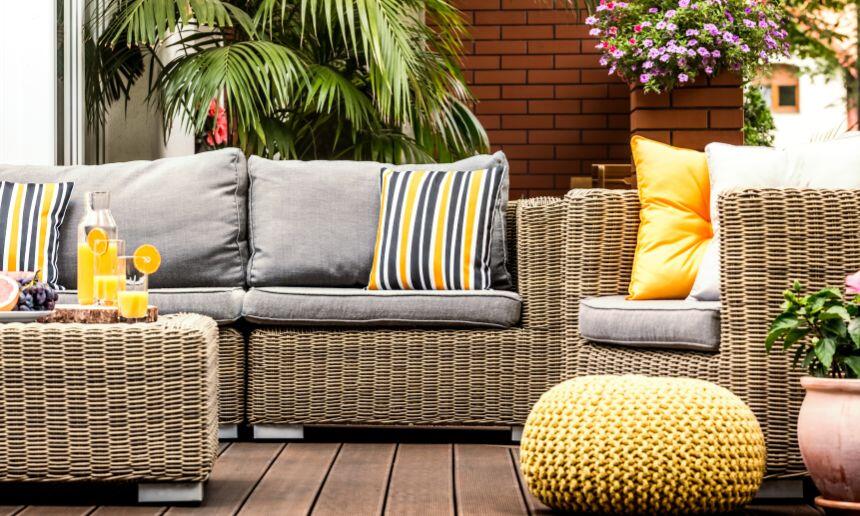
Depending on the type, size, shape, and material they’re made of, the price of a pouf can vary greatly.
However, you’ll hardly be able to find a decent pouf for less than $50-100, while some models can cost as high as $1,000.
Plus, the fact that poufs are currently very popular and in high demand only drives the price further up.
Considering that many people look to add not one, but a couple of poufs to spruce up their home decor, the costs quickly pile up, and these interior design pieces can take a sizeable chunk out of your budget.
There are several reasons that drive the poufs price up and I take a closer look at each of them.
Materials
Poufs can be made of different materials, but most of those that are used for these purposes are quite costly and significantly increase the price of the whole product.
High-quality materials used to produce poufs, especially the covering fabric, are expensive to source and add a lot to the production costs.
Genuine leather, hand-woven textiles, wool, or natural cotton are all premium materials, so they come at a premium price.
In addition, the price can be even higher if you want your pouf to be made of materials that are sustainably produced and ethically sourced.
Whatever the material used, the cost is definitely much higher than when using synthetic alternatives, which are very rare when it comes to poufs.
Poufs, especially when used for additional seating, are subject to plenty of tear and wear and the use of natural and high-quality materials ensures their durability.
Craftsmanship and Manufacturing Technique
Poufs, especially more expensive ones, are often hand-made. This requires much more time than serial machine production, which adds to the overall cost.
Plus, not everyone has the ability to do it, so hand-made poufs are typically crafted by skilled artisans who highly rate and charge their services.
Making of each pouf demands a lot of precise measuring, sewing, cutting, and embroidery.
The intricate and detailed craftsmanship of these pieces make them a luxurious and stylish addition to home decor, but also drive their prices way up.
There’s also the matter of archiving a particular shape and firmness of a pouf and making it last.
If you plan to use poufs for sitting, you’ll quickly learn to appreciate these aspects of manufacturing.
A well-crafted pouf will be more comfortable and help you keep good posture while sitting on it.
Brand and Design
Like with most home decor pieces, poufs made by established brands or carrying the stamp of reputable designers will typically cost much more than no-name or plain store-brand products.
High-end designers commonly charge a premium for their creations and, yet, their poufs are usually in high demand due to the higher perceived value of their brand among the customers.
The price can be even higher if a pouf comes as a part of limited series or a special collection.
Origins and Tradition
Furthermore, the origin of the pouf can also significantly contribute to the overall price.
The best example is the world-renowned Moroccan poufs, coming out of North Africa cities famous for their leather craftsmen, such as Marrakesh.
The original Moroccan poufs are made using only the highest quality materials, such as real leather, fur, or suede.
Throughout the centuries, people in this part of the world have developed specific ways of treating leather, including the traditional tanning process, which makes these poufs more durable and wear-resistant, but also much more expensive.
When looking for a pouf to purchase, you’ll also notice that vintage poufs can be very expensive.
These pieces are often passed from generation to generation and that tradition and high-quality craftsmanship increase their price, but also their resale value.
High Demand
The law of the market is that the more people want something, the more costly it will be.
At the moment, poufs are very much in style and often the important pieces in designing modern home decor.
With the demand this high and supply still relatively limited, especially when it comes to hand-made pieces, it’s logical that the value will rise.
While the price tag of some poufs may seem too steep, obviously there are people willing to pay it and see these small furniture pieces as worth the cost.
How To Make A Pouf
Here’s how to make your own pouf ottoman:
Materials:
2 yards of fabric (heavyweight or upholstery fabric is best)
A sewing machine
Scissors
Ruler or measuring tape
Upholstery thread
Needle
Stuffing (polyester fiberfill or foam pellets)
Instructions:
Cut two circles of fabric, each with a diameter of 18 inches. These will form the top and bottom of the pouf.
Cut a strip of fabric that is 18 inches wide and 56 inches long. This will form the sides of the pouf.
Sew the two short ends of the strip of fabric together, forming a circle. Sew one of the circles of fabric to the top of the strip of fabric, right sides together.
Stuff the pouf with the filling of your choice. It’s best to start with a small amount and gradually add more until you reach your desired level of firmness.
Sew the remaining circle of fabric to the bottom of the pouf, right sides together. Turn the pouf right side out and fluff the stuffing to evenly distribute it.
Trim any excess fabric or loose threads.
Congratulations!
You now have a beautiful and functional pouf ottoman. Place it in your living room, bedroom, or any other room that needs a cozy and stylish touch.
Conclusion
For many homeowners, poufs may seem too expensive, especially considering that they’re typically used as complimentary home decor pieces.
However, the price of a pouf reflects not only the design and premium materials used in its production but also the time, experience, and craftsmanship behind the manufacturing process.
Once you get a chance to experience a quality pouf, you’re probably to realize that the price tag is mostly justified and that they’re more than worth the money spent.
And, you’ll, more than likely, love the way the poufs can tie the room together and how comfortable and relaxing they can be when used to create an additional seating area.
Still, paying the steep price for the pouf remains a matter of personal preference and, equally important, the available budget.
There are cheaper options available, but they’re not likely to deliver the same level of aesthetics, comfort, and durability.

